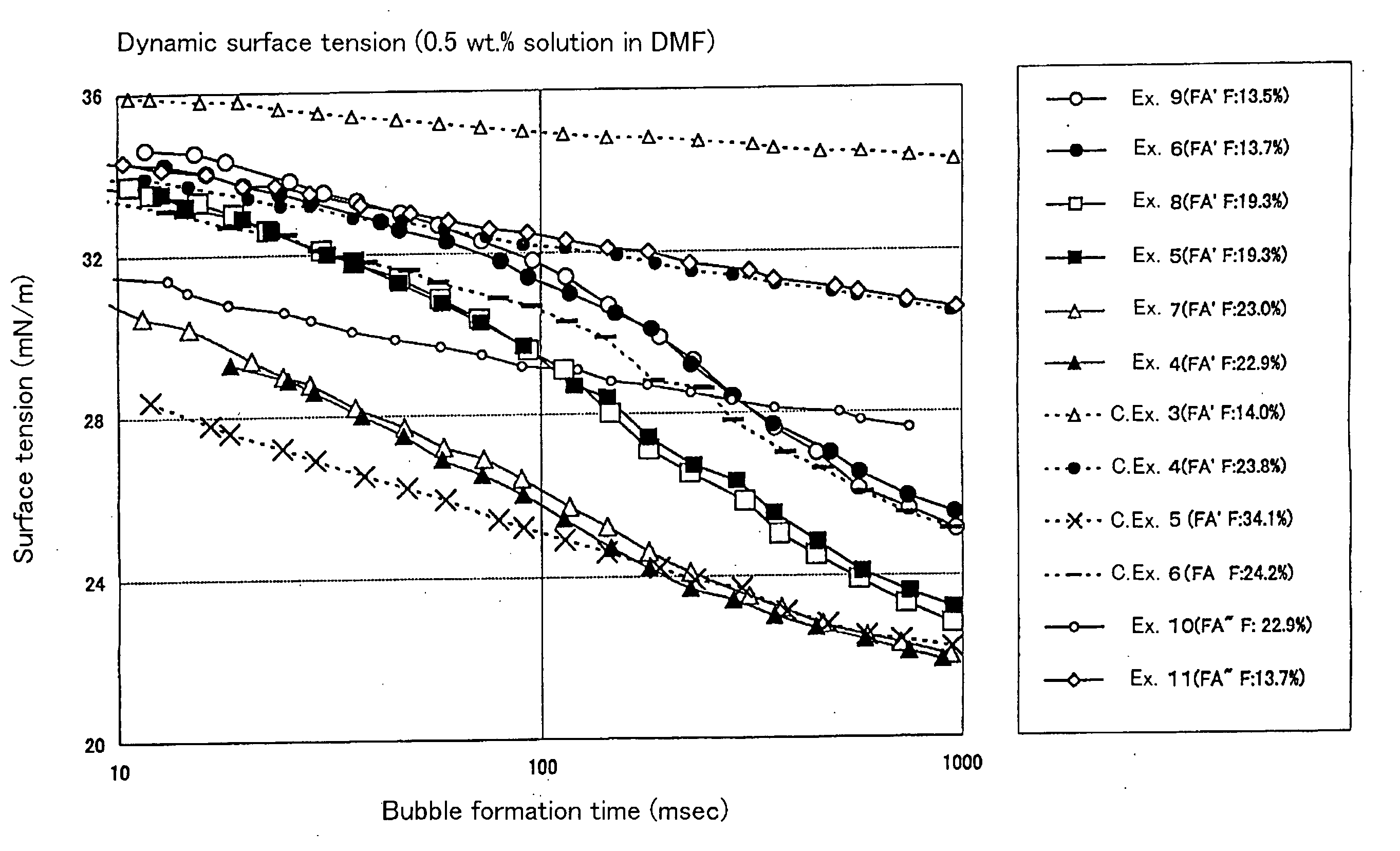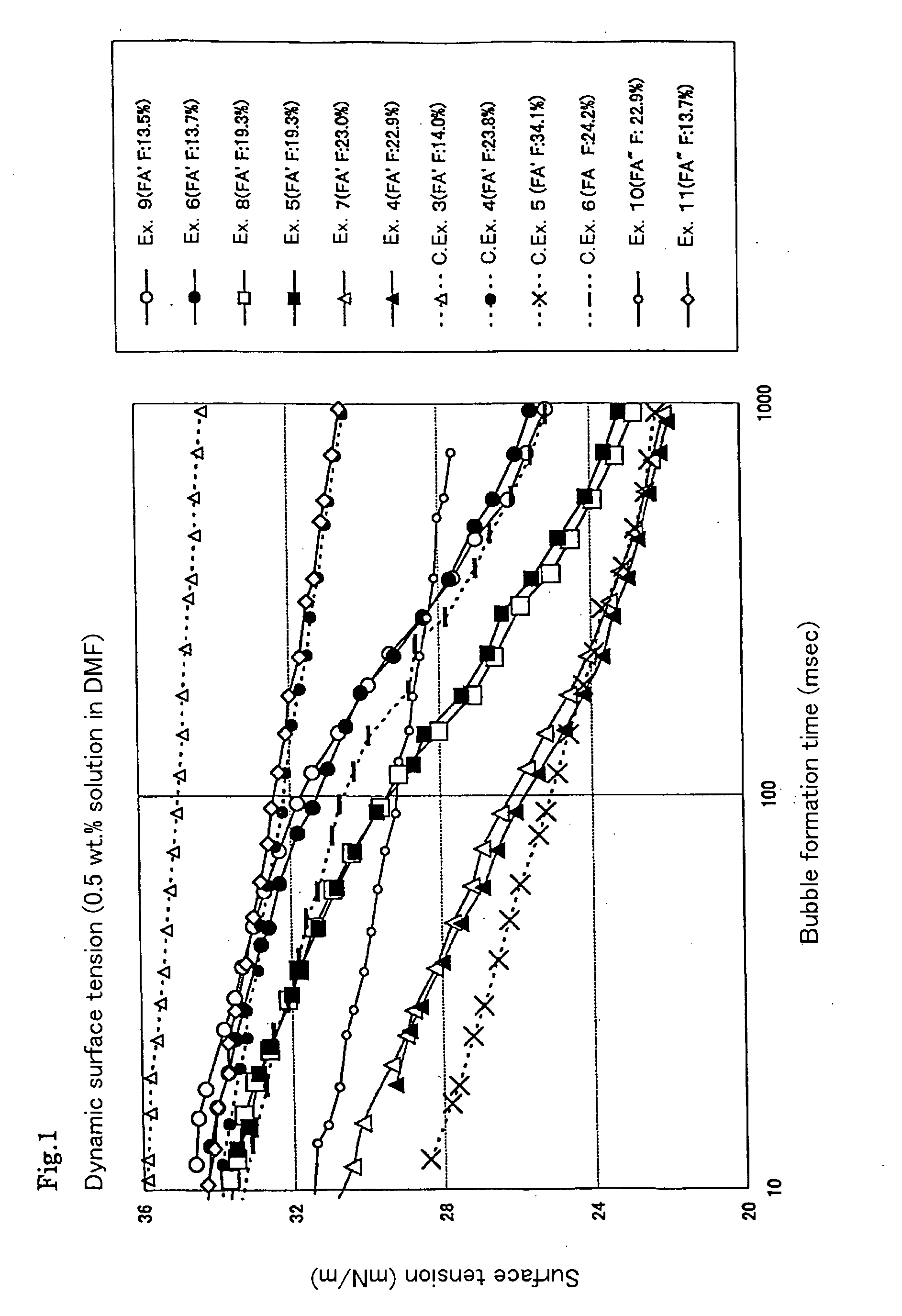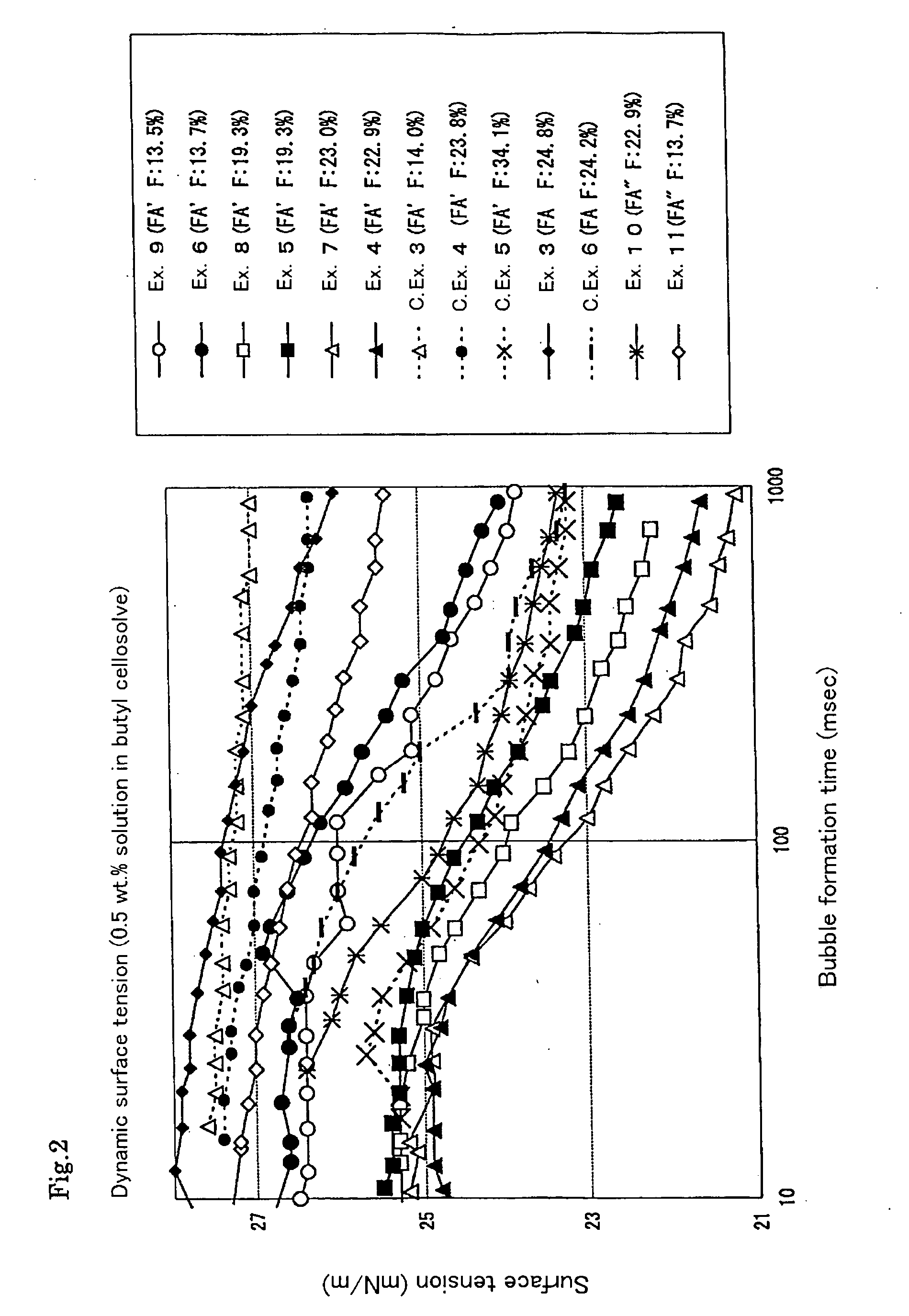Surfactant and dispersion aid each comprising graft fluoropolymer
- Summary
- Abstract
- Description
- Claims
- Application Information
AI Technical Summary
Benefits of technology
Problems solved by technology
Method used
Image
Examples
synthesis example 1
(Synthesis of Isocyanate Group-containing Vinyl Monomer)
[0104] In a 500 mL three-necked flask equipped with a dropping funnel, the following components were charged:
2,4-tolylene diisocyanate 100 gethyl acetate 100 gdibutyltin dilaurate 0.1 g
[0105] While shaking the mixture at a temperature of 50 to 55° C., the followings were added dropwise through the dropping funnel over 15 minutes:
hydroxyethyl methacrylate90 gethyl acetate90 g
and the mixture was reacted for 8 hours to give an isocyanate group-containing vinyl monomer (a) shown below:
example 1
Preparation of a Graft Copolymer Containing a Perfluoroalkyl Group Having 7 or More Carbon Atoms:
[0106] In a 1,000 mL glass polymerization sample tube, the following components were charged and reacted in a nitrogen atmosphere at 75° C. for 8 hours while shaking, to give a branch polymer.
Mercaptoethanol 3 gCF3CF2(C2F4)nC2H4OCOCH═CH2 (FA) 95 g[n = 3.5 on average]Stearyl methacrylate (StMA) 5 gAzoisobutyronitrile0.17 gEthyl acetate 120 g
[0107] After the completion of the reaction, the gas chromatography analysis revealed that 100% of the monomers 20 were consumed. The NMR analysis revealed that the composition ratio (molar ratio) of the respective components in the polymer, namely, the ratio of mercaptoethanol:FA:StMA was 1.0:4.8:0.8.
[0108] After lowering the temperature to 55 to 60° C., 9 g of 2-isocyanatoethyl methacrylate and 0.1 g of dibutyltin dilaurate were charged in an air atmosphere and the reaction was conducted at 55 to 60° C. for 8 hours while shaking to give a mac...
example 2
Preparation of a Graft Copolymer Containing a Perfluoroalkyl Group Having 7 or More Carbon Atoms:
[0112] A graft polymer was prepared in the same manner as in Example 1, except that 38 g of a solution (50% by weight) of the isocyanate group-containing vinyl monomer (a) prepared in Synthesis Example 1 was used in place of 9 g of 2-isocyanatoethyl methacrylate.
[0113] In the preparation of each of the branch polymer and the graft polymer, 100% of the monomers were consumed. After the completion of the reaction for forming a macromonomer, the NCO absorption peak in the IR spectrum nearly disappeared. The GPC analysis revealed that the number average molecular weight of the polymer obtained after distilling off the solvent was 8,500.
[0114] The solvent solubility and static surface tension of the resultant polymer were determined. The dispersibility of the tetrafluoroethylene resin powder in the solvent was evaluated. The results are shown in Tables 5 and 7 to 12.
PUM
| Property | Measurement | Unit |
|---|---|---|
| Percent by mass | aaaaa | aaaaa |
| Percent by mass | aaaaa | aaaaa |
| Percent by mass | aaaaa | aaaaa |
Abstract
Description
Claims
Application Information
 Login to View More
Login to View More - R&D
- Intellectual Property
- Life Sciences
- Materials
- Tech Scout
- Unparalleled Data Quality
- Higher Quality Content
- 60% Fewer Hallucinations
Browse by: Latest US Patents, China's latest patents, Technical Efficacy Thesaurus, Application Domain, Technology Topic, Popular Technical Reports.
© 2025 PatSnap. All rights reserved.Legal|Privacy policy|Modern Slavery Act Transparency Statement|Sitemap|About US| Contact US: help@patsnap.com



